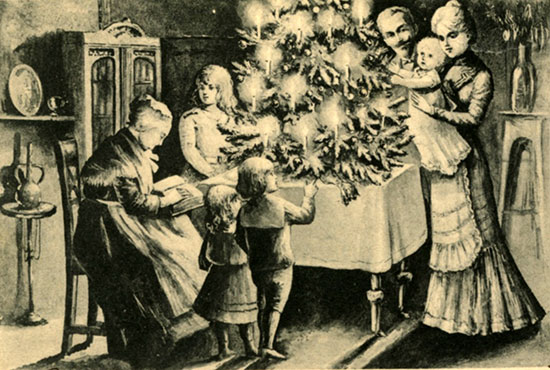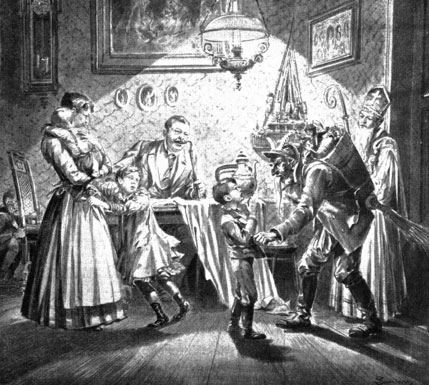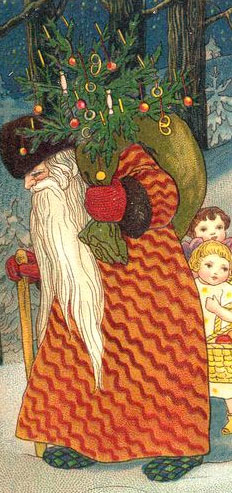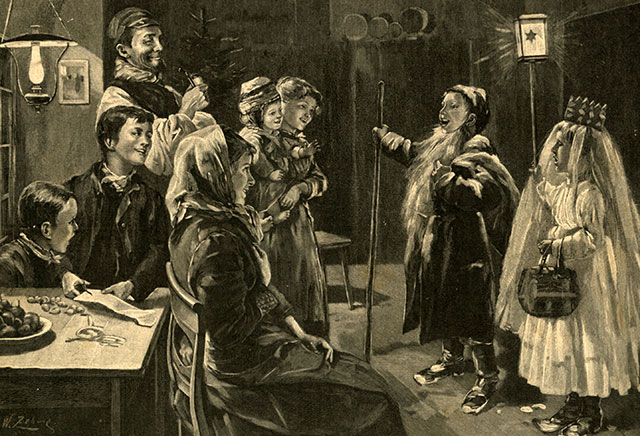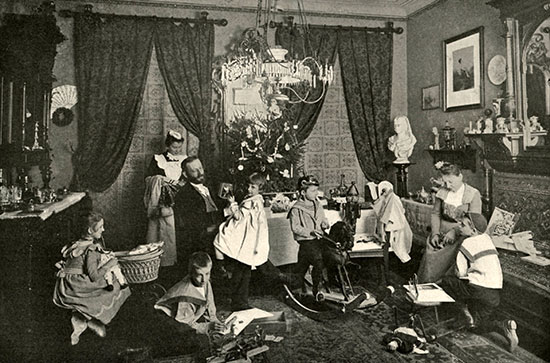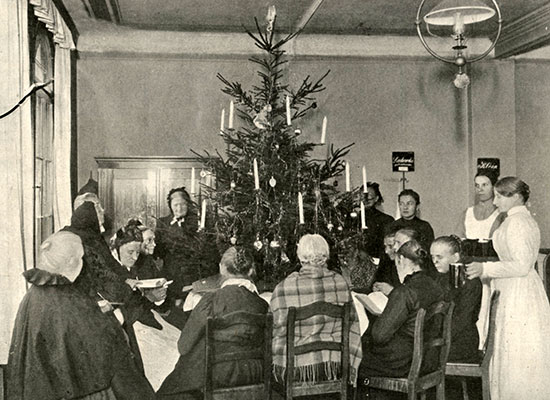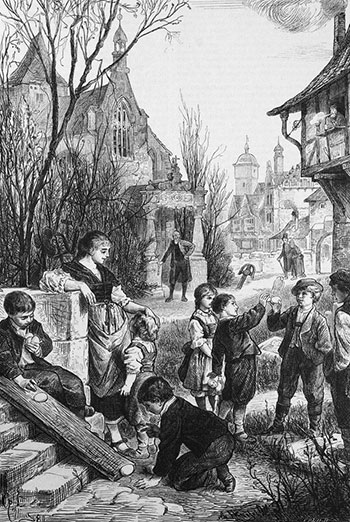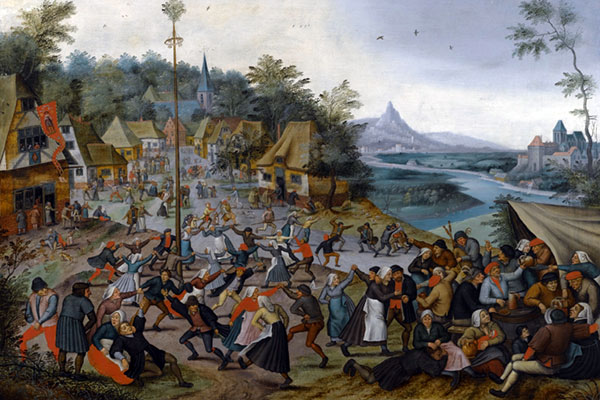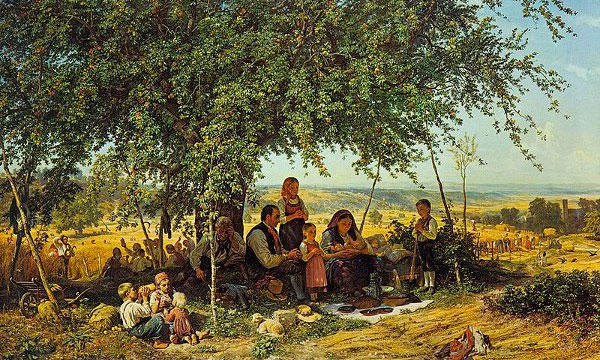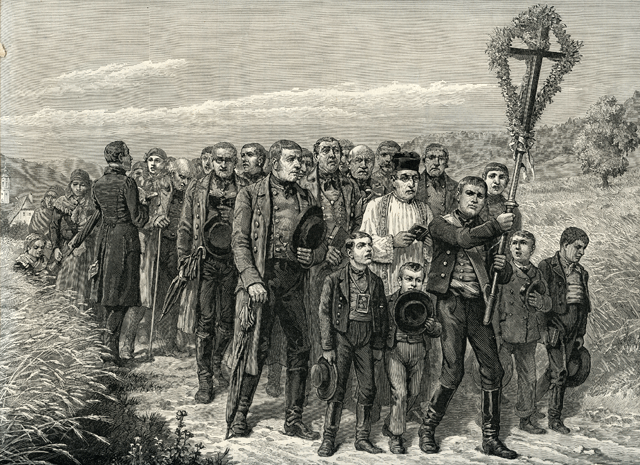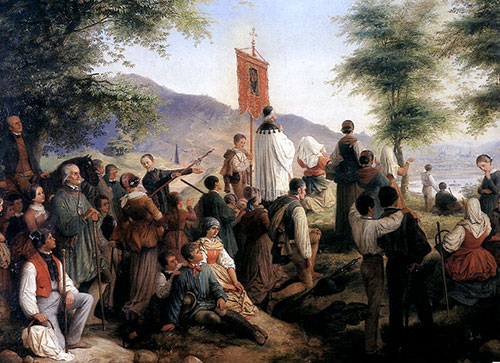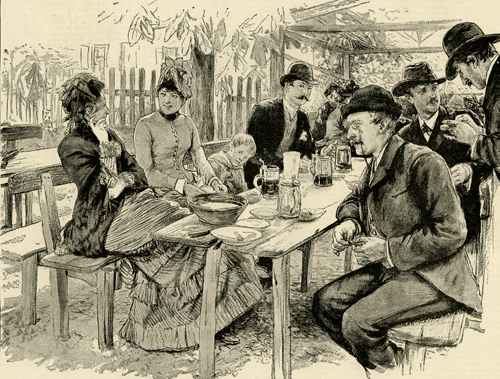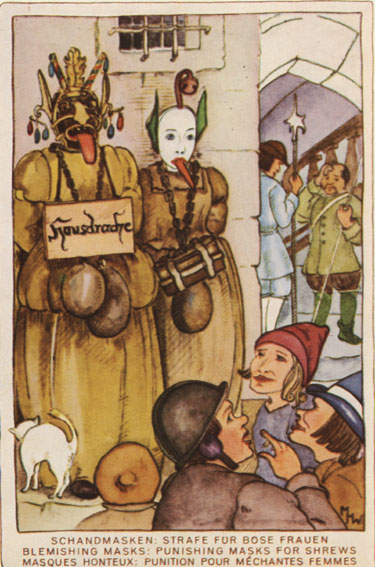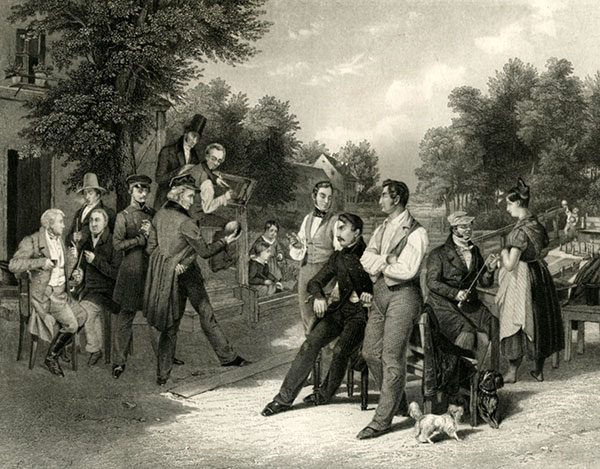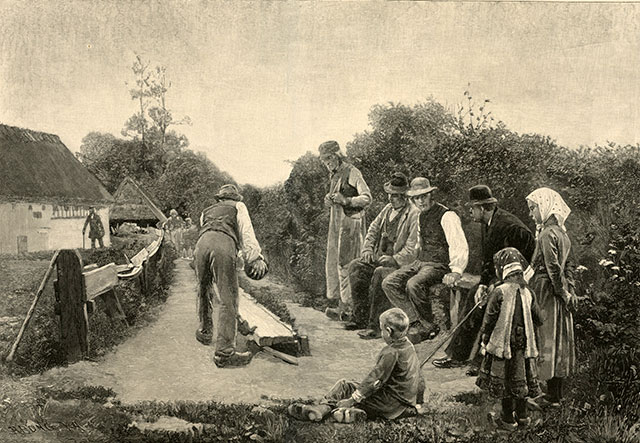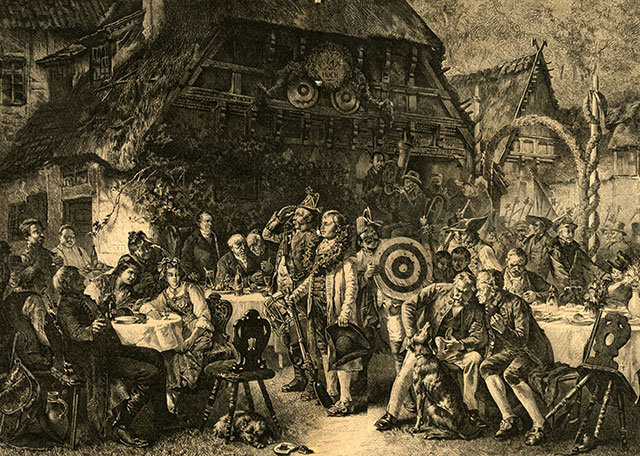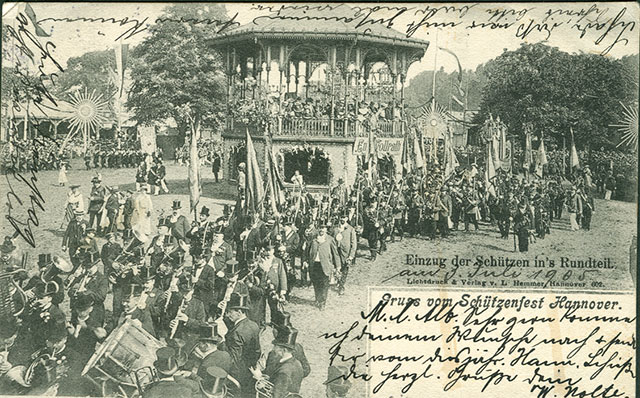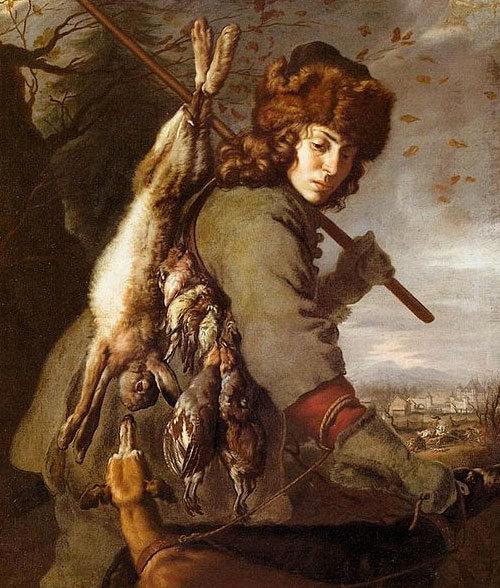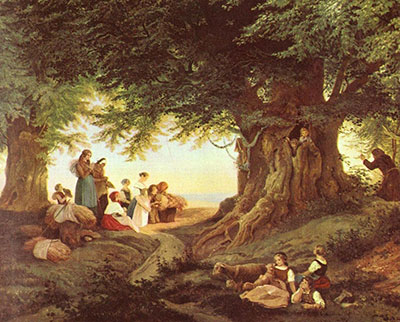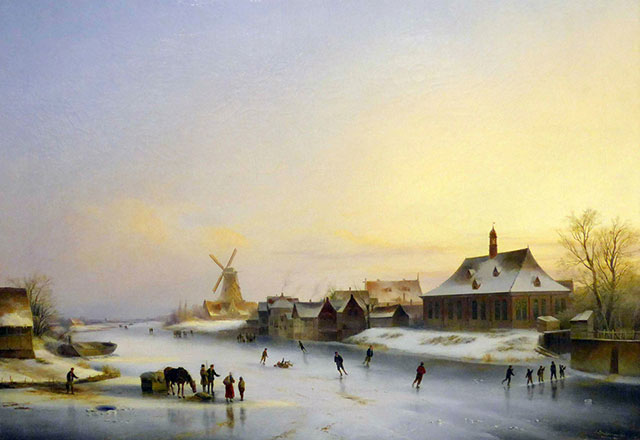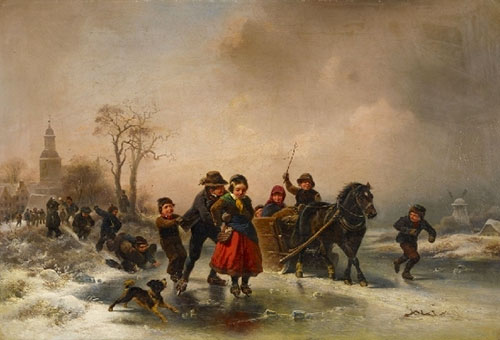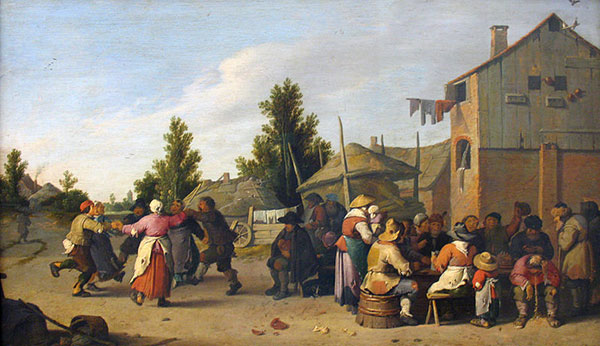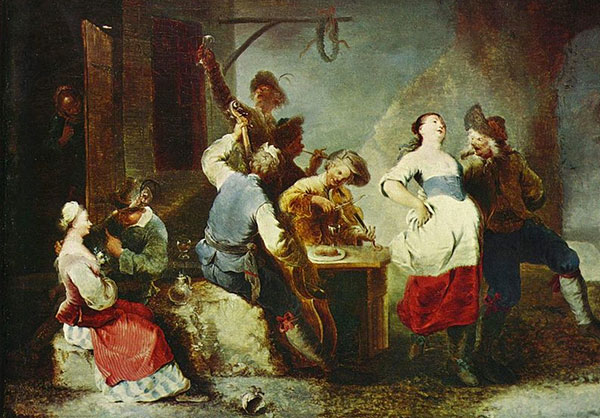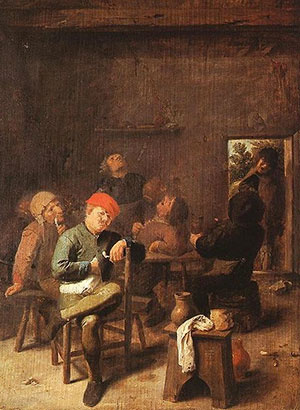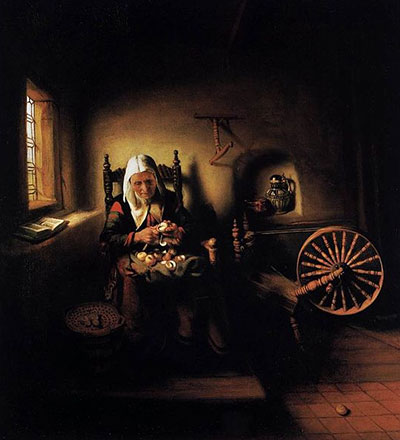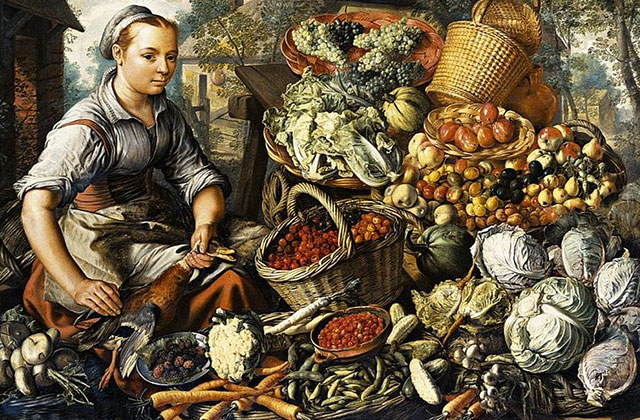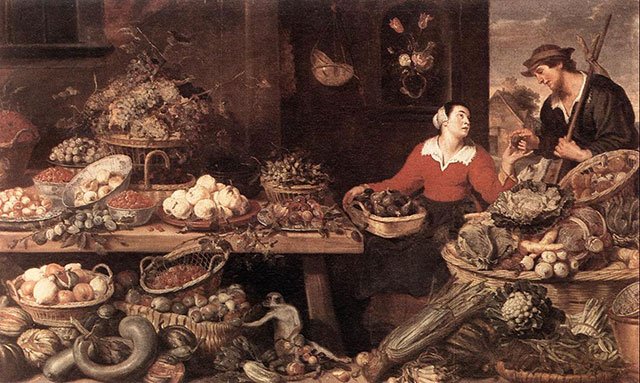Henry Blanck came from Lehe, a suburb of Bremerhaven, and emigrated to Hoboken, New Jersey in 1871. The Erxmeyer family originated in the Principality of Lippe, moved to Walsrode, Hannover, moved again to Lehe and finally emigrated to Hoboken, New Jersey in the early 1870s. The Petermann family came for Ganderkesee in the Duchy of Oldenburg and emigrated to Hoboken, New Jersey circa 1883. Fritz Kettler was born in Friesland and emigrated to Hoboken circa 1882. Hoboken was the American home base of two German shipping lines.
Peter Goehle came from Herrnsheim, a suburb of Worms in the Duchy of Hessen-Darmstadt, and emigrated to New York City in 1873. Catherine Furst and her brother, Ludwig, were born in Achaffenberg, Bavaria and emigrated to New York City circa 1850.
German immigrants brought may of the traditions illustrated below to the United States.
Christmas Holiday Season - Early December to Early January
The biggest holiday celebration in Germany is from early December until early January. The season officially starts on the forth Sunday before Christmas with the beginning of Advent.
The weeks to Christmas are counted on an Advent wreath. A wreath of evergreens is decorated with candles. One candle is lit the first Sunday. Two candles are lit on the second Sunday and so forth until Christmas. Advent Wreath - wikipedia.
Another method of counting is the Advent Calendar which contains 24 windows. Starting on December 1 a window is opened each day revealing an image, a piece of candy or a small toy. This tradition started in the 1800s in Germany and continues today with many beautiful advent calendars available.
The Christmas markets start around the feast of St. Nichols which is December 6.
Festivities continue to the feast of the Magi (or Wise Men) on January 6th, the 12th day of Christmas, also known as Epiphany. It is traditionally the day the Magi appeared to pay honor to the Christ Child and bring him gifts of gold, frankincense and myrrh.
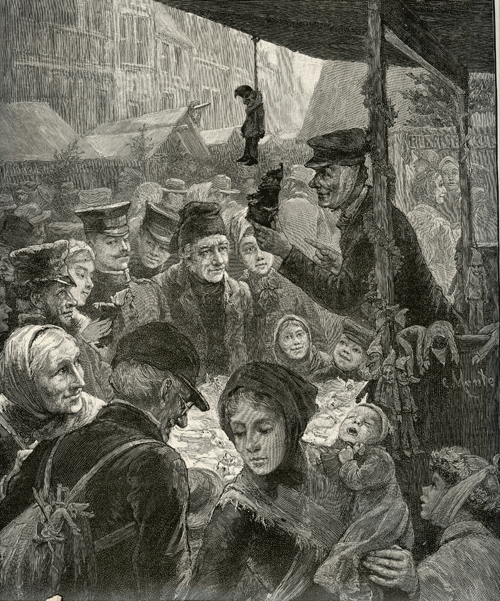
CHRISTMAS IN GERMANY - A STREET SCENE
Christmas Weihnachten is the German holiday with the most significant traditions. Christmas markets date back to as early as the 14th century and sell seasonal food and sweets, gingerbread, mulled wine, trees, tree decorations, and toys. Christmas markets are held in city centers across Germany.
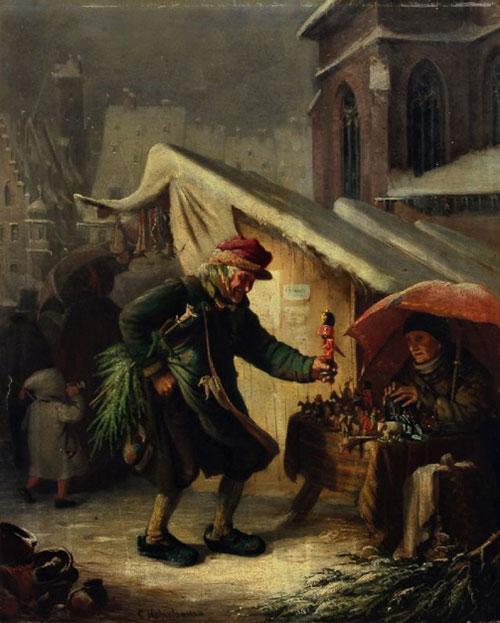
Franz Carl Hohnbaum, Weihnachtsmarkt, public domain
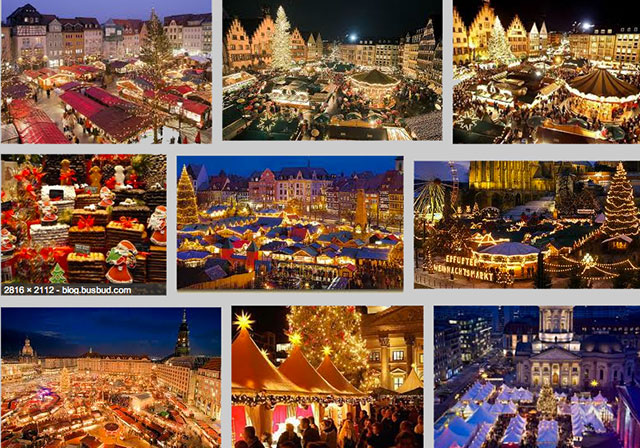
Christmas Markets are still held in Germany (and, in fact, around the world). A Google image search shows thousands of German Christmas Markets photos like the ones above.
